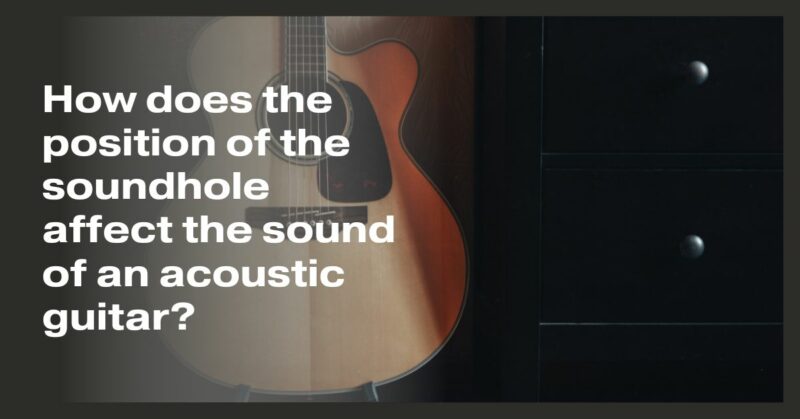The soundhole of an acoustic guitar is a humble yet crucial feature that significantly influences the instrument’s sound and resonance. While it might appear as a simple hole in the guitar’s body, its placement and size are meticulously designed to achieve a harmonious balance in sound production. In this article, we’ll explore how the position of the soundhole affects the sound of an acoustic guitar and why it matters to both players and luthiers.
The Function of the Soundhole:
Before we delve into its position, let’s understand the primary role of the soundhole in an acoustic guitar:
- Sound Projection: The soundhole is not a speaker but rather a channel for sound to escape from the guitar’s interior. It allows the vibrations of the strings and the resonant energy within the guitar’s body to be projected outward, creating the audible music we hear.
- Resonance Enhancement: The soundhole helps balance the internal air pressure within the guitar, promoting resonance. When the guitar’s top vibrates in response to string vibrations, it compresses and decompresses the air inside. The soundhole helps manage this process.
- Tonal Character: The size, shape, and placement of the soundhole significantly influence the tonal character of the guitar. It contributes to factors like volume, projection, and tonal balance.
Soundhole Placement:
The placement of the soundhole on an acoustic guitar’s top is a critical design element, and it’s generally located either in the center or closer to the upper bout (the wider upper part of the guitar’s body). Here’s how soundhole placement affects the guitar’s sound:
- Center Placement:
- Balanced Tone: Guitars with a center-placed soundhole tend to produce a more balanced and even tone. The sound radiates symmetrically from the hole, resulting in a consistent projection of sound across the entire tonal spectrum.
- Versatility: These guitars are versatile and suitable for various playing styles, making them a popular choice among musicians.
- Enhanced Bass Response: Center-placed soundholes can enhance the guitar’s bass response, providing a warm and full-bodied sound.
- Upper Bout Placement:
- Focused Sound: Guitars with soundholes closer to the upper bout often exhibit a more focused and pronounced midrange. This can make them suitable for styles that require a strong, defined presence in the mix.
- Articulation: The positioning of the soundhole can lead to increased note clarity and articulation, making it an excellent choice for fingerstyle players and soloists.
- Less Feedback: Upper bout placement may also reduce feedback when playing at high volumes, making these guitars favorable for live performances.
Size and Shape Matters:
While soundhole placement is essential, the size and shape of the soundhole also play a significant role in shaping the guitar’s tone. Larger soundholes tend to produce a more significant volume and pronounced bass response, while smaller ones can emphasize midrange and treble frequencies. Additionally, the shape of the soundhole can influence the dispersion of sound.
Conclusion: Crafting the Acoustic Palette
The position of the soundhole in an acoustic guitar is a deliberate choice made by luthiers to achieve specific tonal characteristics. While center-placed soundholes offer balanced tones and versatility, upper bout placement can create a focused, articulate sound. Understanding the impact of soundhole placement and size empowers guitarists to select an instrument that aligns with their playing style and musical preferences. Ultimately, the soundhole serves as a gateway for the guitar’s voice, allowing it to sing in harmony with the musician’s creativity and expression.

